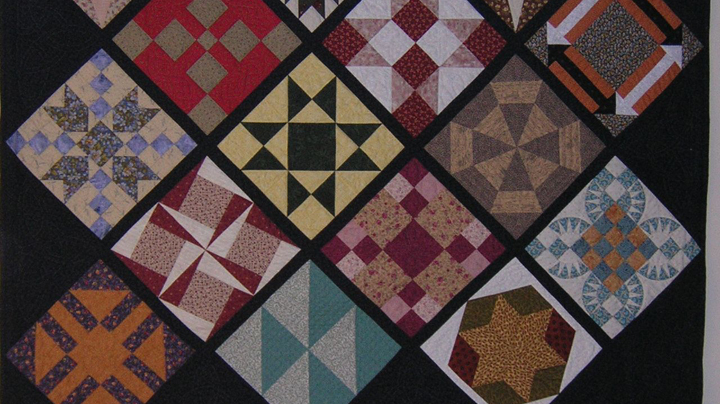Craft Corner: Patchwork an old craft that can be new

All basic crafts have a fascinating heritage bound up in early lifestyle and needs. The artistic quality evolved as time went on. Stone Age people learned to sew animal skins together by firstly making holes in the skin and threading the skins together with strips of hide. The first needles were made of bone.
Patchwork was known in England in pre-Victorian times. It was not the artform it is now but a means of patching tears and won spots. Pieces of fabric were joined together to create a larger length of fabric from which new garments and bed covers were made.
The pioneer women of America took this skill with them and the best known patchwork traditions were born. All supplies for the New World had to be brought by ship and precious space was not wasted on such things as surplus clothes or materials, so it was vital that every scrap of useable fabric be saved. As clothes wore out any good areas were saved and all the small pieces were patched together to form new fabric. To add to the satisfaction of creating patched garments care was taken to arrange the colours in a pleasing way and then to cut the pieces to a particular shape before joining them. Different shapes and patterns were given names, often reflecting an historical moment in time. Early American patterns had such names as Lincoln’s Platform, log cabin and Kansas Trouble.
Creative Australian patchwork
The story of patchwork in Australia follows a similar path. The long and dangerous voyage from England to Australia made all supplies of cloth items hard to get and extremely expensive. There is little wonder that the resourcefulness of early Australian settlers sought and found ways to cope with the situation. Clothes were made over many times and when the last made garment finally wore out all useable material was carefully kept. Good use was made of flour bags. The strong woven fabric was often decorated with patches of coloured fabric.
Life was hard and patchwork provided the opportunity to be creative. The artistry of some surviving quilts form that era bears witness to the achievements of these women as they created a little of the finer things of life to brighten up their hared, often drab, lifestyle.
As blankets developed holes or worn areas they were cut and the pieces arranged to provide a new warm blanket. The pieces were often joined together with decorative patterns of material or stitching. This resourcefulness again became a necessity of life during the Second World War when rationing had to be introduced as part of our national war effort. Many of you will remember two thin towels stitched together to form a bath mat or sheets cut in half and rejoined top to bottom to give them more life. My young brother had a wonderful overcoat made from an Army blanket.
Patchwork may have had its beginnings in utilitarian necessity but it has evolved into a beautiful artform. Patchwork is creative and satisfying. It is a delightful way to relax and unwind.
Fine needlework or basic skills?
One of the features of early patchwork was the fine even stitching, but don’t let that daunt you. I truly believe that all crafts can be adapted to the ability of the craftsperson. To start with concentrate on keeping your stitching even, your ability to also keep your stitches very small will improve with practice. Patchwork has been popular for hundreds of years and as each new generation discovers the beauty and satisfaction of this creative skill its continued appeal is assured for a future decades.
The simplest form of patchwork is the joining of squares of different colours or prints to create a length of fabric. This type of patchwork is very popular for clothing. A plain skirt could have a band of patchwork around the hem. A waistcoat could complete the outfit. This could be reversible, one side patchwork and the other side the matching plain colour of the skirt. Select the skirt and waistcoat patterns from the excellent range of commercial paper patterns available at your local craft store.
Soft toys can be made form fabric created by joining lots of small squares.
Cushion covers in your favourite colours look very smart and are quick to make with this type of patchwork fabric.
Next time I write I will share two patterns for making cushion covers and a few general tips. I love to combine patchwork, appliqué and creative embroidery. If you have stories about the use of patchwork why don’t you share them with us.
image: VRoig









 Proudly Australian owned and operated
Proudly Australian owned and operated